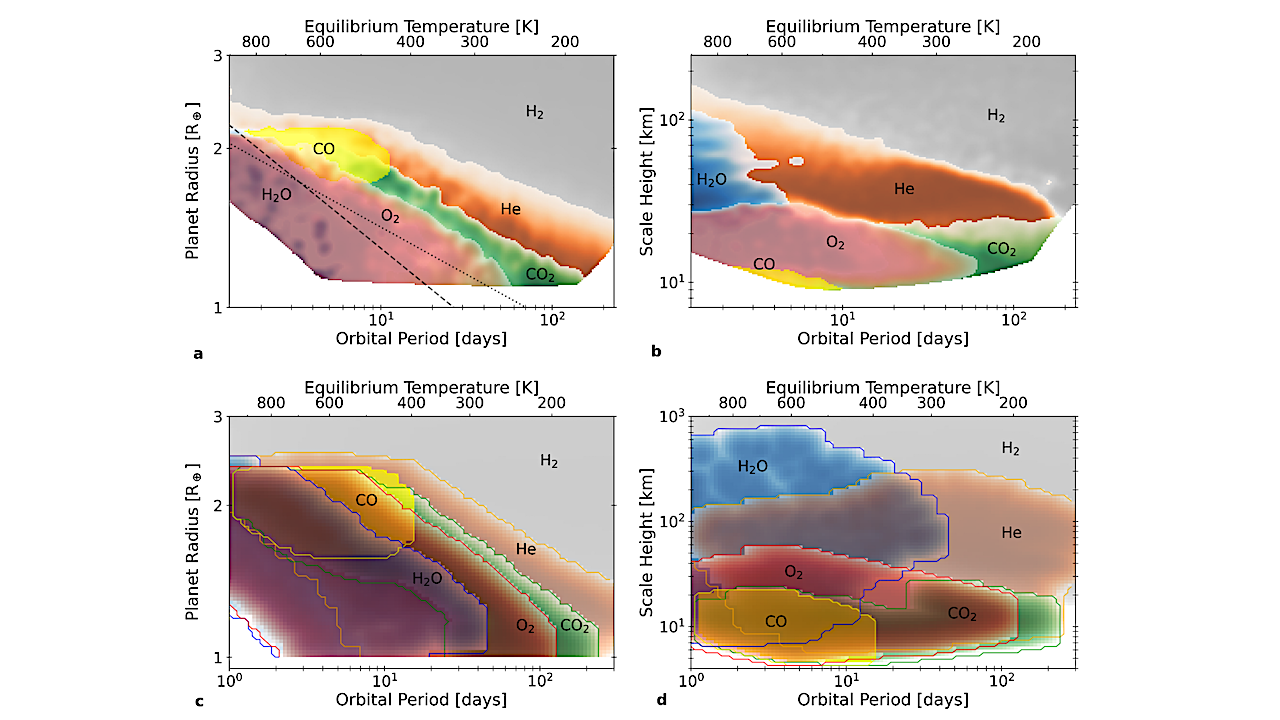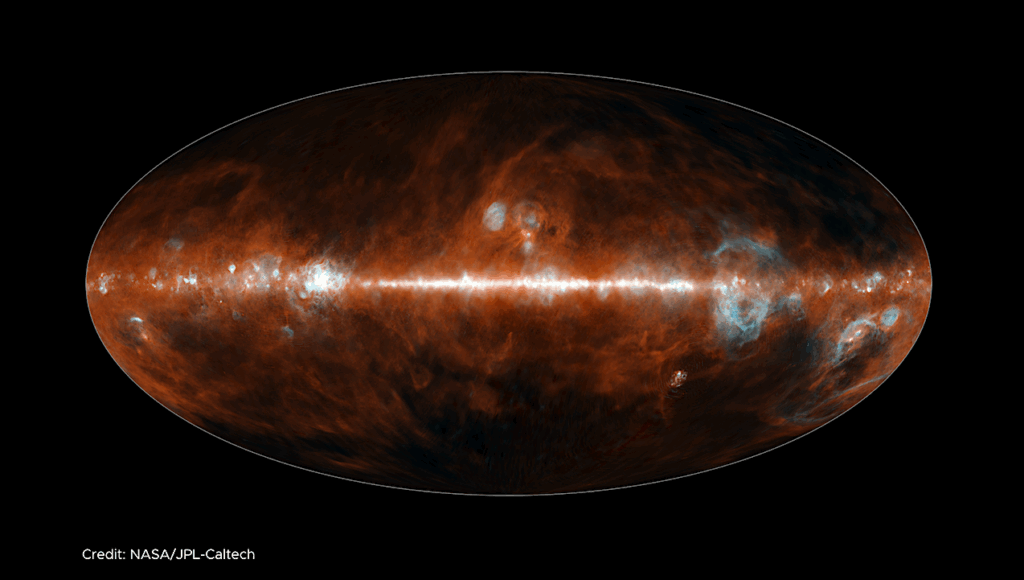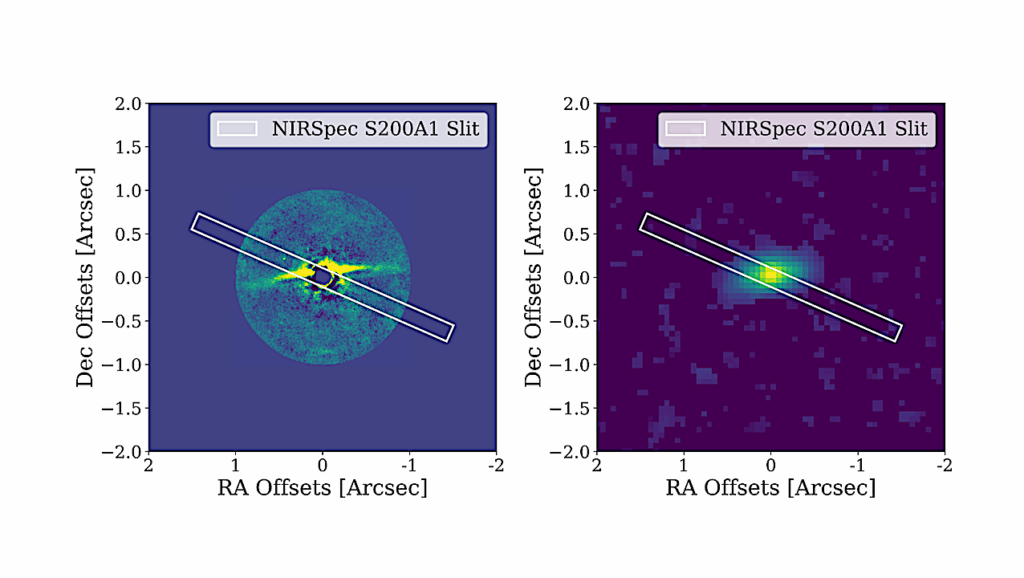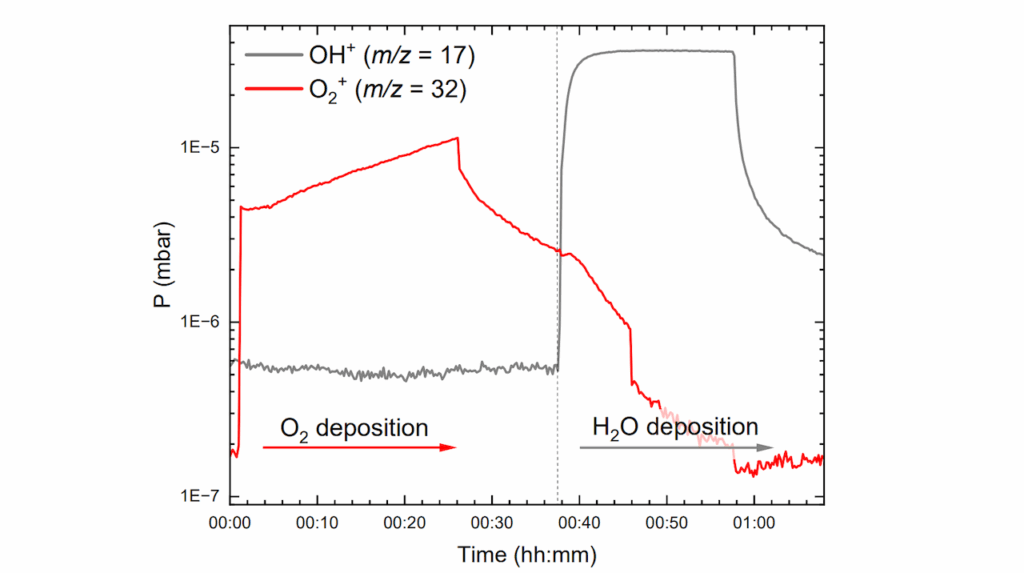An Oxidation Gradient Straddling the Small Planet Radius Valley

We present a population-level view of volatile gas species (H2, He, H2O, O2, CO, CO2, CH4) distribution during the sub-Neptune to rocky planet transition, revealing in detail the dynamic nature of small planet atmospheric compositions.
Our novel model couples the atmospheric escape model 𝙸𝚜𝚘𝙵𝙰𝚃𝙴 with the magma ocean-atmosphere equilibrium chemistry model 𝙰𝚝𝚖𝚘𝚍𝚎𝚕𝚕𝚎𝚛 to simulate interior-atmosphere evolution over time for sub-Neptunes around G, K and M stars.
Chiefly, our simulations reveal that atmospheric mass fractionation driven by escape and interior-atmosphere exchange conspire to create a distinct oxidation gradient straddling the small-planet radius valley.
We discover a key mechanism in shaping the oxidation landscape is the dissolution of water into the molten mantle, which shields oxygen from early escape, buffers the escape rate, and leads to oxidized secondary atmospheres following mantle outgassing.
Our simulations reproduce a prominent population of He-rich worlds along the upper edge of the radius valley, revealing that they are stable on shorter timescales than previously predicted.
Our simulations also robustly predict a broad population of O2-dominated atmospheres on close-in planets around low mass stars, posing a potential source of false positive biosignature detection and marking a high-priority opportunity for the first-ever atmospheric O2 detection. We motivate future atmospheric characterization surveys by providing a target list of planet candidates predicted to have O2-, He-, and deuterium-rich atmospheres.
Collin Cherubim, Robin Wordsworth, Dan Bower, Paolo Sossi, Danica Adams, Renyu Hu
Comments: Accepted in ApJ
Subjects: Earth and Planetary Astrophysics (astro-ph.EP)
Cite as: arXiv:2503.05055 [astro-ph.EP] (or arXiv:2503.05055v1 [astro-ph.EP] for this version)
https://doi.org/10.48550/arXiv.2503.05055
Focus to learn more
Submission history
From: Collin Cherubim
[v1] Fri, 7 Mar 2025 00:22:48 UTC (10,980 KB)
https://arxiv.org/abs/2503.05055
Astrobiology,








